Name Brooke Hart | ||
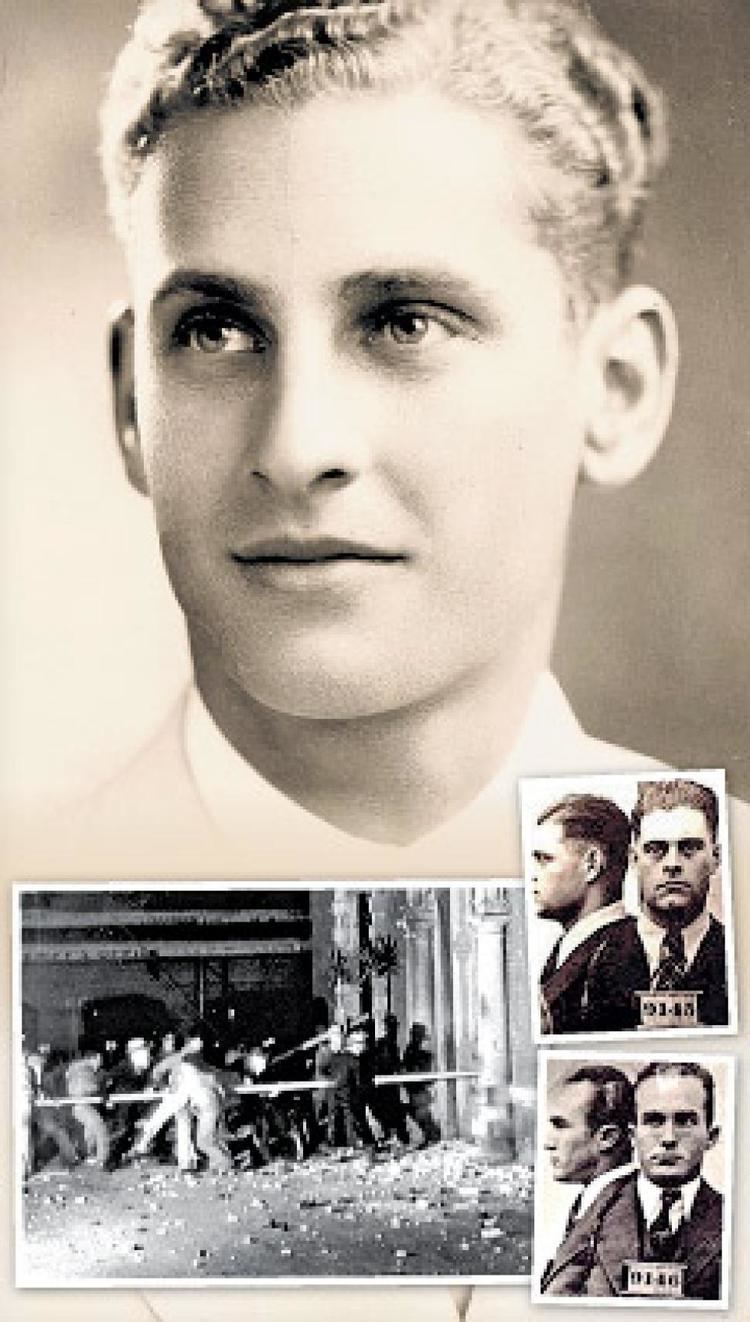 | ||
Died November 9, 1933, California, United States People also search for Christina Marie Williams, Joseph Ardizzone, Marion Parker | ||
Kidnapers Lynched by Enraged Crowd After Jail Battle - San Jose, 1933
Brooke Hart (June 11, 1911 – November 9, 1933) was the eldest son of Alexander Hart, the owner of Leopold Hart and Son Department Store at the southeast corner of Market and Santa Clara Street in downtown San Jose, California. His kidnapping and murder were reported throughout the United States, and the lynching of his alleged murderers, Thomas Harold Thurmond and John M. Holmes, sparked political debate. This incident is sometimes referred to as "the last lynching in California", though the last California lynching is said to have occurred on January 6, 1947, in Callahan, but the name of the victim has never been released and the event cannot be confirmed in any printed news publications.
Contents
- Kidnapers Lynched by Enraged Crowd After Jail Battle San Jose 1933
- Vigilante Justice Kidnappers Lynched By An Angry Mob November 26 1933
- Kidnapping and murder
- Witness accounts
- Ransom demands
- Arrests and confessions
- Search for the body
- Warning signs
- Overnight lynching 2627 November
- Immediate aftermath
- Impact of the case
- Prosecution of lynch mob
- Public criticism
- Civil suits
- Family
- Modern coverage
- In popular media
- References
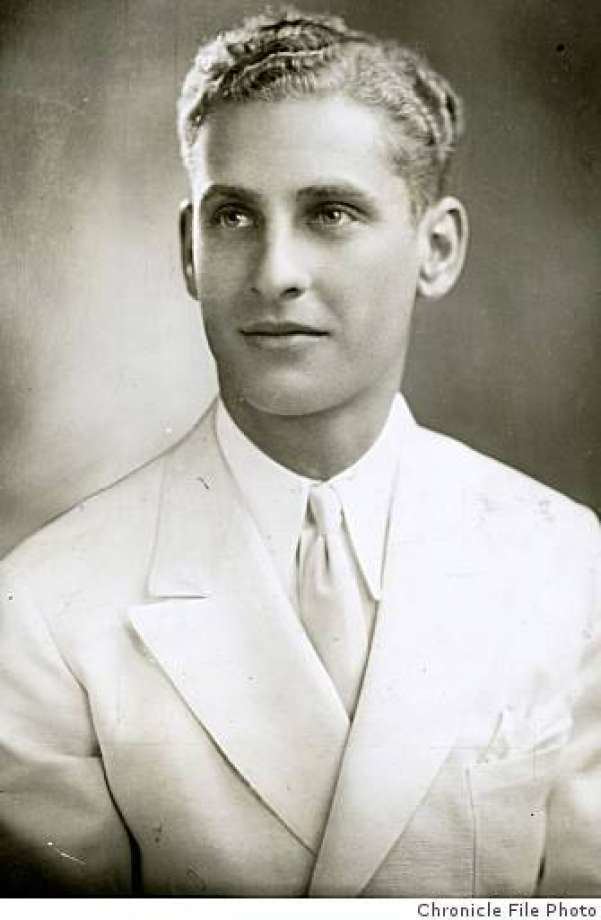
When Hart's body was discovered in San Francisco Bay on the morning of Sunday, November 26, 1933, word of a lynch mob spread quickly throughout northern California. That evening, a crowd gathered in St. James Park across from the Santa Clara County Courthouse. The lynching was broadcast as a 'live' event by a Los Angeles radio station. Scores of reporters, photographers, and news camera operators, along with an estimated 3,000 to 10,000 men, women, and children, were witness to it. When newspapers published photos, identifiable faces were deliberately smudged so that they remained anonymous; the following Monday, local newspapers published 1.2 million copies, twice the normal daily production.
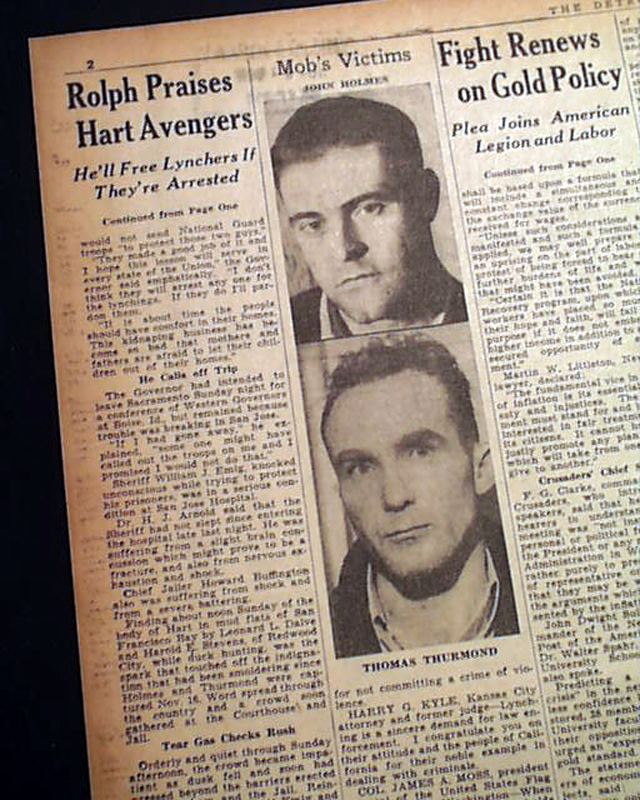
Hart had worked in his family's department store during much of his youth and was well-known and liked by the local community. After he graduated from Santa Clara University, his father made him a junior vice president in the store and began grooming him to take over when his father retired.
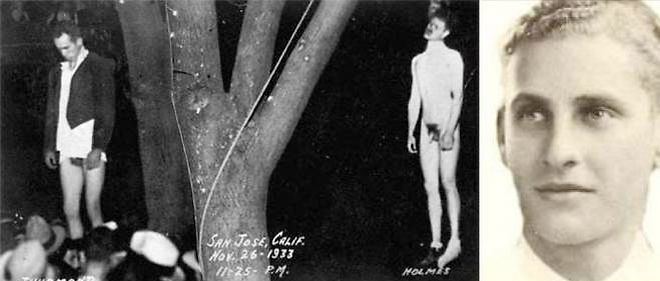
Vigilante Justice! Kidnappers Lynched By An Angry Mob - November 26, 1933
Kidnapping and murder

Just before 6:00 p.m. on Thursday, November 9, 1933, the 22-year-old Hart was kidnapped while retrieving his 1933 Studebaker President roadster, a graduation present from his parents, from a downtown San Jose garage. According to later confessions, two men had plotted to kidnap Hart: John Holmes and Thomas (Harold) Thurmond. When Hart stopped his car near the exit of the parking lot, Thurmond slipped into the passenger seat and forced Hart to drive, at gunpoint, to what is now Milpitas, about seven miles north of San Jose. There they abandoned the Studebaker for another waiting car, which had been driven to the rendezvous point by Holmes, and the group of three drove to the San Mateo Bridge.

On the bridge, Hart was ordered out of the car, and one of the kidnappers struck him twice on the head from behind with a concrete block until he was unconscious. They then bound his arms with baling wire before dumping him into San Francisco Bay. The tide was out and there was only a few feet of water at the base of the bridge, so the kidnappers shot Hart, killing him. A few hours later, they placed a telephone call to the Hart family demanding $40,000 for Hart's return, with further instructions to follow.
Witness accounts
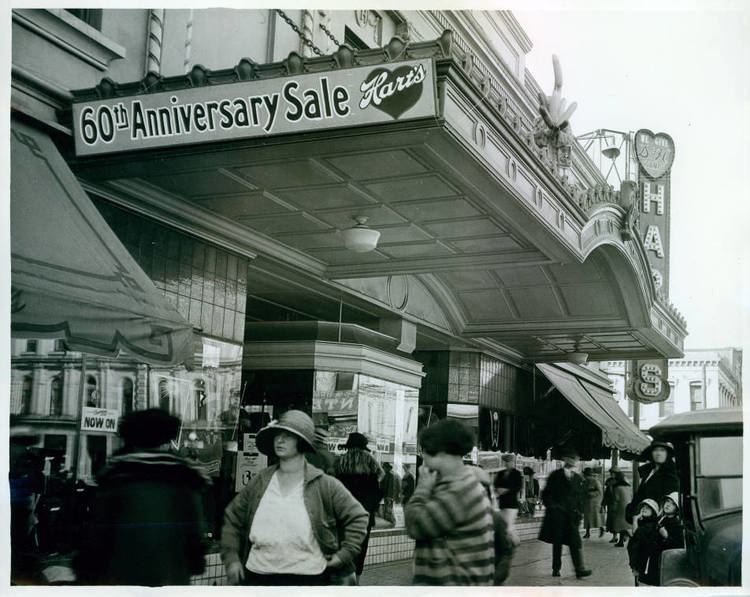
Hart had been kidnapped at the exit of the parking lot behind the family department store. A half-hour later, a mother and daughter on a farm immediately south of Milpitas watched as a dark, long-hooded sedan with three men in it stopped near their barn. A few minutes later, a convertible (presumably the Studebaker President roadster) with three men (two on the running boards and one driving) stopped near the sedan. Their description of the man driving the convertible, slender with light colored hair, matched the description of Hart, as did the Studebaker as his car. Hart was driven away in the larger car. One of the group followed in the Studebaker. The mother did not report the events until the following Monday (November 13), when she was visiting relatives and learned about the kidnapping. The investigators did not agree on the veracity of the story, which did not agree with the number of kidnappers from the recorded confessions.
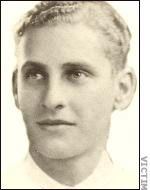
Separately, after midnight, a man living in Milpitas spotted an abandoned convertible left with its lights on outside their home; his wife reported that it had been there since 7 p.m. the night of November 9. The car was confirmed to be Hart's by Sheriff Emig and a deputy.
Two wood gatherers said they heard cries for help from the bridge near the shore of Alameda on the night of November 9, but they did not find anyone after a search, nor did they hear any shots that night.
Ransom demands
At 9:30 the night of November 9, Aleese Hart, the older of Hart's two younger sisters, answered the telephone and was informed by a "soft-spoken man" that Hart had been kidnapped and that instructions for his return would be provided later. At 10:30, what sounded like the same man called and informed the other sister, Miriam, that her brother would be returned upon payment of US$40,000 (equivalent to $740,000 in 2016). Delivery instructions would be provided the next day.
The San Jose Police, the Santa Clara County Sheriffs office, and the U.S. Division of Investigation (the forerunner of the FBI) were quickly brought into the case. The phone calls were traced to locations in San Francisco. Hart's wallet had already been discovered in San Francisco on the guard rail of a tanker which had been refueling the Matson Lines passenger liner SS Lurline, and it was assumed the wallet had been tossed from a porthole on the liner. Lurline was stopped and searched in Los Angeles upon arrival on November 11, but nothing was found. Police then advanced an alternative theory: since Pier 32, from which Lurline had departed, was close to the sewer outfall, the heavily laden tanker may have dipped below the surface and picked up the wallet from where it had been discharged from the sewer, lifting it from the bay once a sufficient amount of fuel had been offloaded. One of the passengers detained during the three-hour search was Babe Ruth, traveling to Los Angeles watch a football game between Southern California and Stanford.
A "compromise ransom" telegram from Sacramento arrived on November 12, suggesting that US$20,000 (equivalent to $370,000 in 2016) would be sufficient. However, the family was not contacted again until Monday, November 13, when a letter, postmarked in Sacramento, arrived in the mail at the family department store. It instructed Hart's father, Alex Hart, to have a radio installed in the Studebaker (which already had a radio), because the ransom instructions would be broadcast over NBC radio station KPO. The kidnapper also instructed Alex Hart to be ready to drive the Studebaker to deliver the ransom, but Alex Hart had never learned to drive.
On Tuesday, a second ransom note arrived, this time postmarked in San Francisco. It instructed Alex Hart to place the ransom in a black satchel and drive to Los Angeles. That night, Hart took a call from a man claiming to be his son's kidnapper who instructed him to take the night train to Los Angeles. The authorities staked out the train station and mistakenly arrested a bank teller out for an evening stroll. The next day, a sign was placed in a window of the Hart store stating that Alex Hart did not drive. A call was received that night again demanding that Hart drive to deliver the ransom. Hart demanded proof that his son was with the caller. The caller stated that Brooke Hart was being held at a safe location. Because a phone tap had been placed on the Hart telephone, the call was traced to a garage in downtown San Jose, but the caller was gone by the time the authorities arrived.
Arrests and confessions
Another ransom demand arrived the following day, again ordering Alex Hart to drive with the ransom. That night, another call was received and the demand that Hart drive was repeated. The sheriff arrested Thomas Harold Thurmond near a pay phone in a parking garage 150 feet (46 m) from the San Jose Police station at about 8 p.m. At 3:00 a.m., Thurmond, after hours of questioning, signed a confession in which he claimed to have bound Brooke Hart with wire and tossed him off the San Mateo Bridge into San Francisco Bay sometime between 7:00 and 7:30 on the night of the kidnapping. He identified a recently unemployed salesman, John Holmes, separated from his wife and two children, as his accomplice. Holmes was arrested in his SRO room at the California Hotel near the San Jose Police station at 3:30 a.m. According to Thurmond's confession, Holmes approached him with the scheme six weeks prior, after he had separated from his family.
At 1 p.m. on November 17, Holmes signed a confession admitting that he and Thurmond kidnapped Hart and threw him into San Francisco Bay. Later, the Santa Clara County District Attorney advised the press that, unless corroborated by independent evidence of the crime, confessions by Thurmond and Holmes in which each blamed the other for the crime were not admissible in a court of law.
Meanwhile, local newspapers reported that Holmes and Thurmond had met with psychiatrists and would attempt to plead not guilty by reason of insanity. Thurmond claimed he had been "crazy" for more than a year, since his sweetheart married another man, and Holmes planned to repudiate his confession, which his attorney claimed had been "forced from him by third-degree methods," including threats to "turn him over to the mob for lynching if he did not confess." Upon learning of rumors of a possible insanity plea on the part of Thurmond, law enforcement authorities directed two psychiatrists from Agnews State Mental Hospital in Santa Clara, California to examine the two men to preclude such a defense. Following cursory examinations in their cells at the Santa Clara County jail in San Jose, with a mob outside in the jail courtyard, both men were declared sane.
Search for the body
Police officers from Santa Clara, San Mateo, and Alameda Counties began searching the bay around the bridge, hoping to find Hart's body. Trace evidence, including stains on the bridge, "blonde hair on a brick" and other markings convinced authorities the confessors had truthfully described the sequence of events, including dumping Hart.
The first physical clues were unearthed on November 18. Two 22-pound (10.0 kg) bricks and apparent bloodstains were found at the San Mateo Bridge. The pillowcase used to mask Hart during the car ride to the bridge was discovered, along with Hart's hat, by November 20. The discovery of the hat ended the last hope of the family that Hart would be found alive. A hook-studded apparatus was used to drag the bay, with no success. A weighted dummy was planned to be dropped from the bridge on November 21 in an attempt to see where it would float. Workers constructing a pier of the Bay Bridge reported seeing a body floating in the water during the night of November 22, prompting a search by Oakland and San Francisco police boats, including the shores of nearby Goat Island. Alex Hart announced a US$500 (equivalent to $9,300 in 2016) reward on November 24, hoping to "enlist the aid of the public in the search." By that time, the search for the body involved a blimp from Sunnyvale, police boats from Oakland and San Francisco, United States Marines and a hydraulic pump to dredge the mud from underneath the San Mateo Bridge.
The official search for Hart's body ended on November 25. The next day, two duck hunters from Redwood City discovered a badly decayed and crab-eaten body approximately 0.5 miles (0.80 km) south of the bridge. Hart's body was identified by the coroner and Hart's friends and employees later that day, with several personal effects with the body matched to Hart's known possessions.
Warning signs
Because of lynch threats, Santa Clara County Sheriff Emig moved Thurmond and Holmes to the Potrero Hill police station in San Francisco for safekeeping soon after their arrest. A San Jose newspaper ran a front-page editorial branding Holmes and Thurmond "human devils" and called for "mob violence." Upon their return to the San Francisco jail from questioning, cries of "lynch them" were heard from the crowd surrounding that jail. On November 21, Holmes and Thurmond remained in the jail, and fear of vigilantism led authorities to announce they would be held "indefinitely." Reportedly, "20 influential friends of the socially prominent Hart family" had formed a committee to "insist on immediate and drastic punishment for the prisoners." Prosecutors declined to seek grand jury hearings in the fear that an indictment would incite vigilantes. Despite these fears, the pair were indicted on charges of extortion, using the mails for extortion, and conspiracy, and were returned to the San Jose jail the night of November 22. On November 23, Rolph announced to shocked reporters that he would refuse to dispatch the Guard to protect Thurmond and Holmes.
Let the sheriff handle the matter. He can appoint as many deputies as he wants; he has the power. I am not going to call the guard to protect the kidnapers who wilfully killed a fine boy like that. Let the law take its course.
Upon payment of $10,000 cash—an astonishing sum in 1933—by the father of Jack Holmes, San Francisco attorney Vincent Hallinan agreed to represent his son. Thurmond was defended by J. Oscar Goldstein of Chico. With a volatile mob increasing day and night outside the jail on Saturday, November 24, Hallinan called Rolph and asked that he call out the National Guard should an effort be made to lynch his client. Rolph retorted that he would "pardon the lynchers".
Overnight lynching 26–27 November
Authorities "expected trouble if and when the missing body was found." After the discovery of Hart's body on Sunday, November 26, word went out immediately throughout northern California. All day Sunday and into the evening, radio stations issued inflammatory announcements that a lynching would occur that night in St. James Park in San Jose. By 9:00 p.m., a mob estimated by the press to range anywhere from 5,000 to 15,000 men, women, and children were jammed into the park, with an estimated 3,000 vehicles left on streets nearby. Governor James Rolph was in regular telephonic communication with Raymond Cato, whom he had appointed to head the California Highway Patrol. Cato was ensconced in the home of a Rolph political ally and neighbor in the mountains west of San Jose with an open phone line to the jail. Although the crowd was characterized as "good natured" earlier in the day, there was an ominous chanting of "Eleven o'clock!" periodically.
At approximately 9:00 p.m., Rolph canceled a planned trip to the Western Governors' Conference in Boise, Idaho, to prevent his chief political rival, Lieutenant Governor Frank Merriam, from calling out the National Guard to stop the lynchings. Sheriff William Emig contacted Rolph at 10:30 p.m., asking that the National Guard be deployed to protect the prisoners. Rolph refused. The assault on the jail commenced at approximately 11 p.m.
By midnight, thousands had gathered outside the jail; the sheriff's deputies fired tear gas into the crowd in an attempt to disperse them. However, the crowd became angrier and larger. The nearby construction site at the post office (intended to replace the previous post office, which is now the San Jose Museum of Art) was raided for materials to make a battering ram. Emig ordered his officers to abandon the bottom two floors of the jail, where Thurmond and Holmes were being held. It was later noted that both cells had been occupied by other notorious murderers: Thurmond's cell on the third floor by David Lamson, and Holmes's cell on the second floor by Douglas Templeton. The mob, by this time estimated at 6,000–10,000 (other reports say 3,000–5,000), stormed the jail, took Holmes and Thurmond across the street to St. James Park, and hanged them. Some women in the mob were alleged to have encouraged the violence, seemingly forgetting their prior advice to let the law "take its course". Child movie star Jackie Coogan, a friend of Brooke Hart from Santa Clara University, was reported to be one of the mob that prepared and held the rope for lynching.
Immediate aftermath
Thurmond was buried in an unmarked plot in Oak Hill Memorial Park on November 29, the same cemetery where Brooke Hart had been buried on November 27. Holmes was cremated at Oak Hill on November 29.
According to the San Francisco Chronicle, on December 2, after a special meeting of the city council heard testimony in support of leaving the tree as a monument and warning to evildoers, the council approved the cutting down of the cork elm by city workers. Police were required to keep off a crowd of souvenir hunters seeking a twig or branch of the infamous "gallows tree", the bark and lower branches having been hacked and stripped for mementos.
Impact of the case
The lynching was unique in American political and criminal justice history because it marked the first time that a lynching was a media event. It was also unique because of the political involvement of a state governor and the eagerness by civic and business leaders and law enforcement to allow the lynching of two men who had not been indicted, arraigned, tried, or sentenced for the crime in a court of law. Many modern historians conclude that the two men were indeed guilty.
Royce Brier, a staff writer for the Chronicle, would later go on to win the 1934 Pulitzer Prize for Reporting for his account of the lynching. According to the prize citation, Brier worked for 16 hours along with several assistants mingling with the lynch mob and telephoning running updates from a garage across the street from the jail before composing the story in three hours starting at 12:30 a.m. on the morning of November 27.
Prosecution of lynch mob
Governor Rolph praised the action, stating that California had sent a message to future kidnappers, and promised to pardon anyone involved in the lynching. However, Rolph died on June 2, 1934, before any charges had been filed in the case.
Alameda County District Attorney Earl Warren was the strongest supporter of prosecution for the lynching. Santa Clara County Assistant District Attorney Herbert Bridges was quoted as saying he was "not sorry [the lynching] happened in San Jose." Santa Clara County District Attorney Fred Thomas doubted anyone could be found to bear witness against the leaders of the lynching, characterizing the stories being told by local youths as "boastful" but uncorroborated. The American Civil Liberties Union stated they had found eyewitnesses ready to identify members of the lynch mob by December 1933, but San Jose citizens were outspoken in their opposition to "outsider" interference. Eventually seven people were arrested for the lynchings, but none were convicted. California did not specifically define lynching as a crime, although crimes committed during the lynching such as rioting, assault, and murder could potentially be prosecuted.
One young man was charged for participating in the lynching after he publicly claimed credit for leading the mob, but the charges were dropped. The Santa Clara County Grand Jury met the following year, but despite literally thousands of witnesses, sources of reporters, and hundreds of photographs, the grand jury found that no witnesses could identify anyone from the lynching, so no charges were filed.
Public criticism
In the aftermath of the lynching, Governor Rolph was publicly condemned by former President Herbert Hoover, then at Stanford University in Palo Alto, California. Rolph struck back instantly, accusing Hoover of calling out the U.S. Army against the World War I "Bonus Marchers" who had gathered in Washington, D.C. in 1932 to protest lack of assistance to the veterans of that war. President Roosevelt also condemned the lynching.
Civil suits
Holmes's parents sued Governor Rolph for his role in the lynching of their son, along with radio station KQW and several other persons, but the suit was dropped when the governor died of a heart attack in 1934. Holmes's widow sued Sheriff Emig and several deputies, citing their carelessness and negligence in failing to protect him. Thurmond's family took no action on his behalf and reportedly never again spoke about the matter amongst themselves.
Family
Hart had three sisters, Jeanette, Miriam, and Aleese, and a brother, Alexander Joseph Jr.
Modern coverage
Harry Farrell, a columnist for the San Jose Mercury News, wrote about the lynching in a two-part series in that newspaper in 1983, following up with a book on the same subject after he retired, Swift Justice, published in 1992. Swift Justice was praised by Walter Cronkite and won a Edgar Award in 1993, beating out the expected winner, Ann Rule.
John Murphy criticized Farrell's approach, noting that by accepting the confessions as the baseline truth and hewing to the "conventional" history that led to mob justice, Farrell had invented conversations and created motivations that were impossible to corroborate and glossed over inconsistencies. Murphy points out the later phone calls placed to make ransom demands came from payphones physically close together, culminating in the arrest of Thurmond at a payphone only 150 feet (46 m) from San Jose Police Headquarters. Murphy would go on to write a book, Jury Rigging in the Court of Public Opinion (published in 2007), and write and produce a movie, Valley of the Hearts Delight regarding the 1933 case.
In popular media
The lynching inspired local punk band Executioner to write the song "St. James Park". The song was not released until 2011, when one of the founders of Executioner, Dave Burks, gathered available recordings from the band's active years of 1982–83.
At least four films have been made loosely based on this story:
The 1933 lynching also inspired two short stories from John Steinbeck:
Former San Jose mayor Tom McEnery wrote a play based on Farrell's 1992 book. The play, produced in early 2016 by the San Jose-based Tabard Theatre Company, shares the book's name, Swift Justice. A review criticized the "weak script" and said it had "[too many] shallowly developed scenes."
